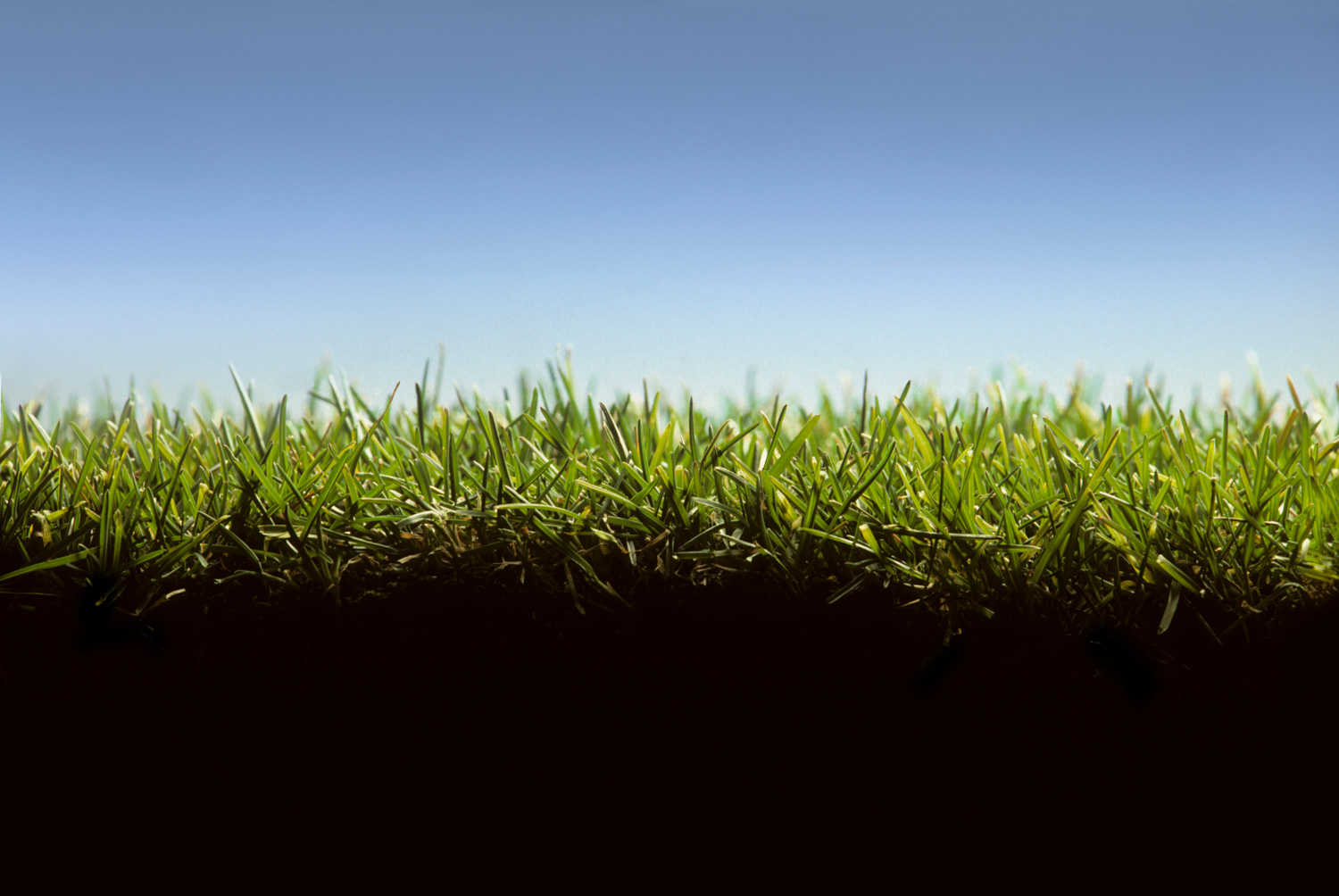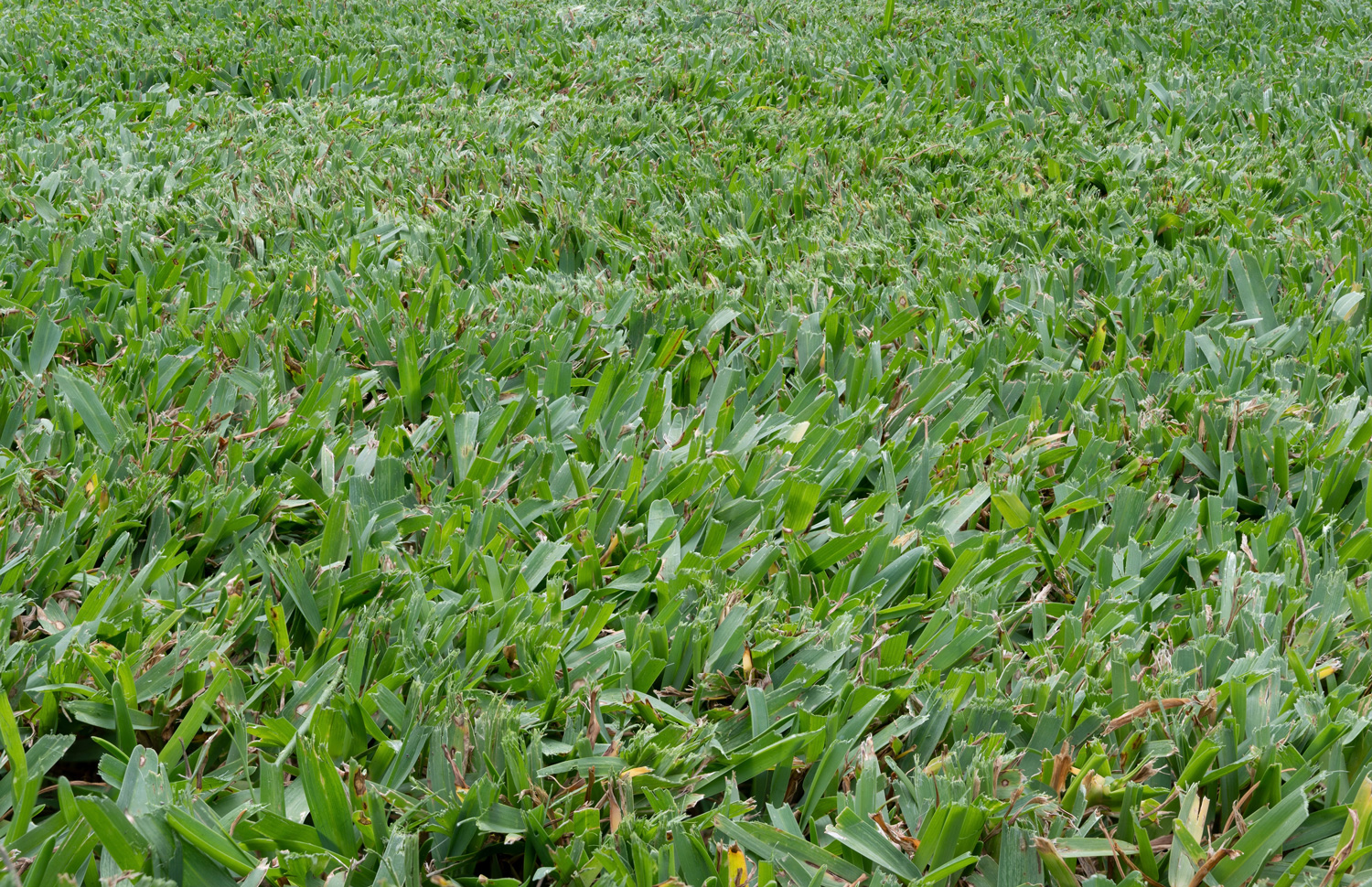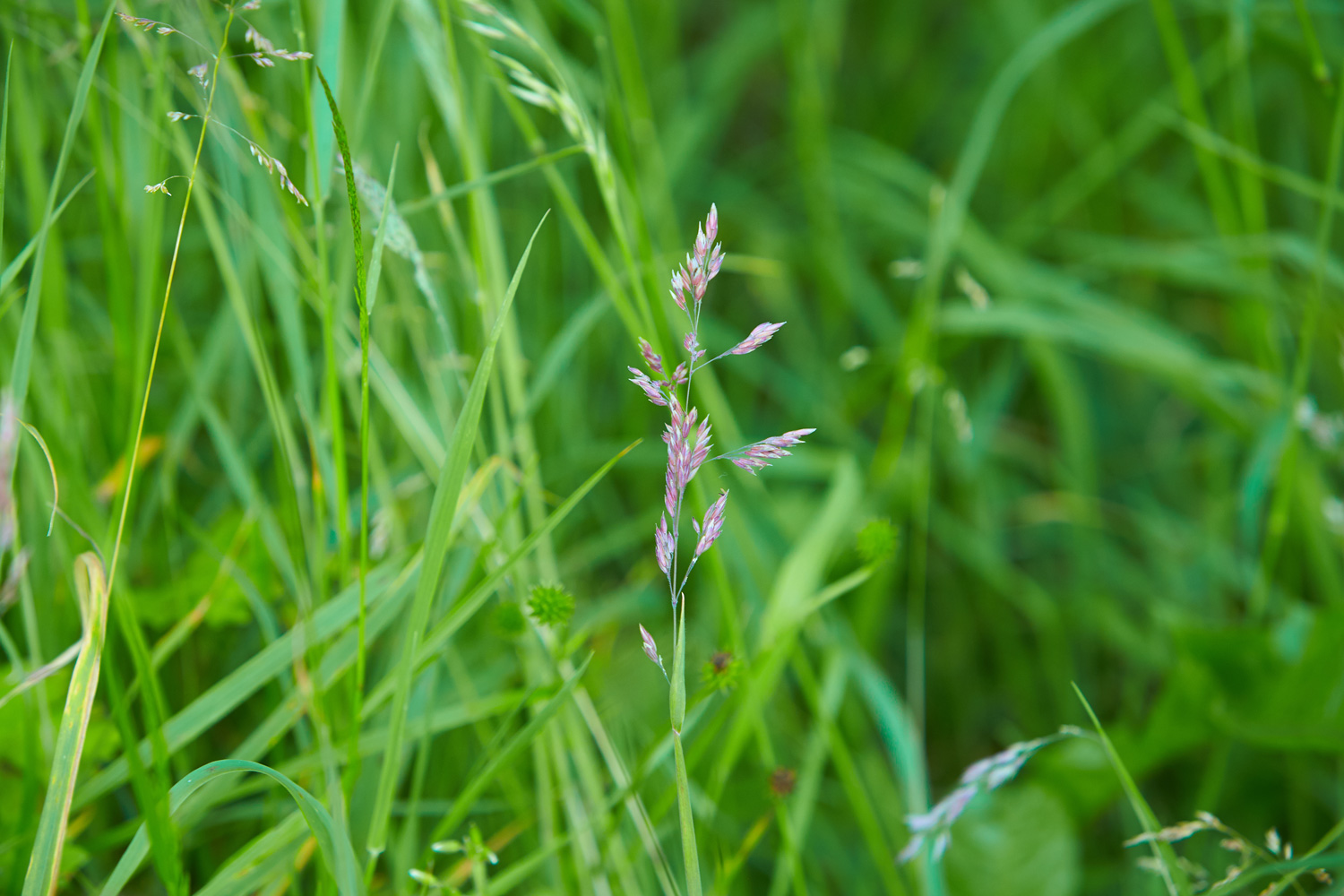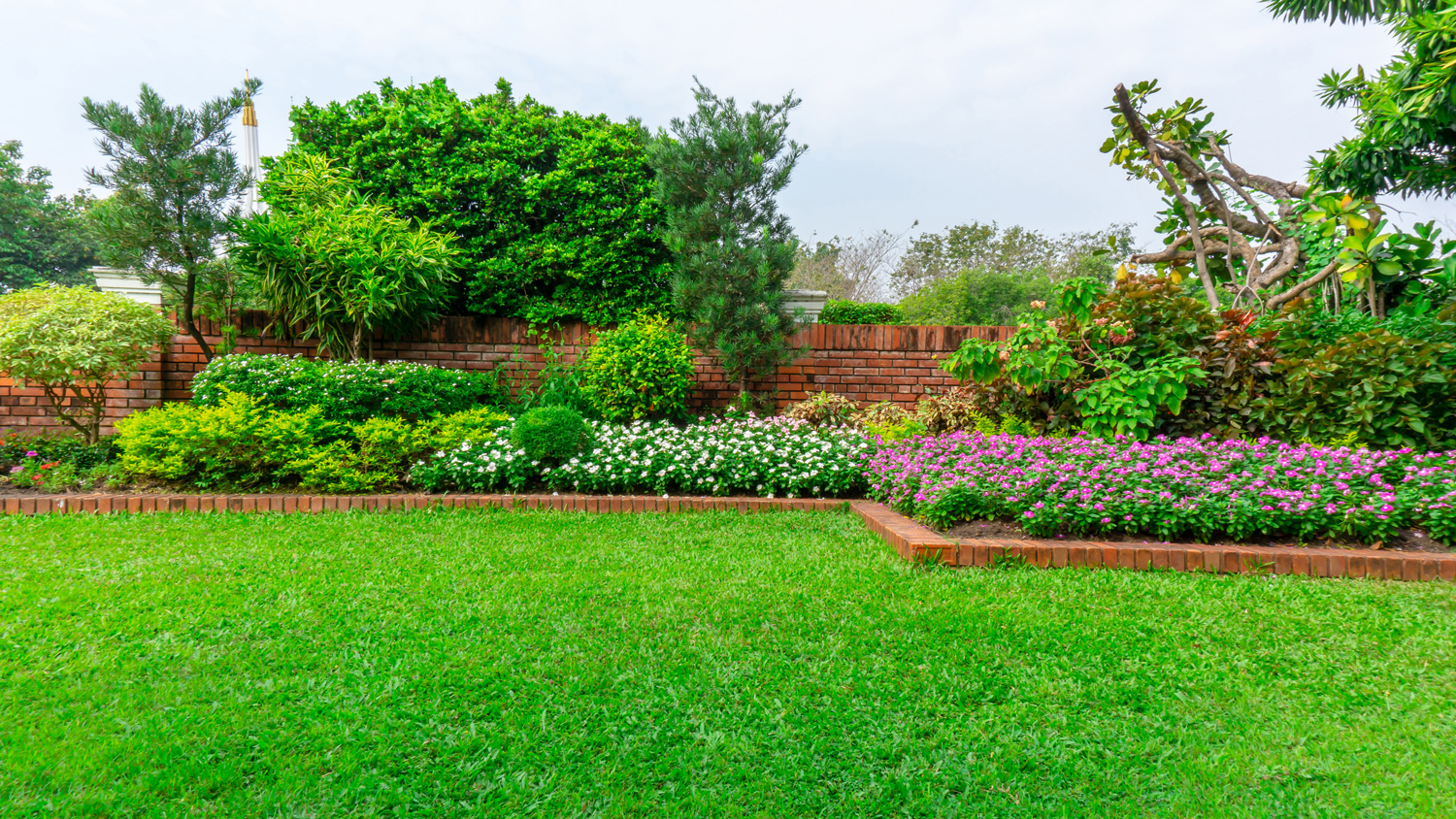Growing and maintaining lush, healthy grass can be difficult in clay soil. You may have questions about whether grass can even grow and thrive in clay soil. Not to worry, as we have done plenty of research to uncover how to grow grass on a property with clay soil.
You can grow grass in clay soil, as it usually has high levels of nutrients like magnesium and potassium. Although clay holds onto moisture or becomes impacted when dry, you can work the soil to get a good-looking lawn.
If you live with clay soil, look for grass seed that will do well in this environment. In addition to choosing a type of grass that thrives in clay soil, consider adding a layer of topsoil and routinely aerate and fertilize your lawn.
Read on to discover helpful tips to achieve a beautiful, healthy grass lawn when you have clay soil. There's no need to become frustrated in your endeavor, as certain grasses naturally thrive for years in this type of ground.
![Buffalo Grass lawn freshly mown - Can Grass Grow In Clay Soil [Inc. The Best Kinds To Use]](https://gardentabs.com/wp-content/uploads/2022/03/Buffalo-Grass-lawn-freshly-mown-Can-Grass-Grow-In-Clay-Soil-Inc.-The-Best-Kinds-To-Use-3.png)
Growing Grass With Clay Soil

Clay soil is beneficial for plants because it contains high amounts of nutrients like potassium, magnesium, and calcium. However, clay soil lacks drainage and tends to hold onto moisture.
When dry, impacted clay soil makes roots struggle and can be challenging to aerate.
Although clay soil isn't the easiest to work with, you can grow a yard filled with picturesque grass. It pays to research different types of grass that can survive the unique properties of your clay soil composition.
Also, you will have to do some prep work before planting any seeds.
If clay soil becomes bogged down with water or dry, it can deprive plant roots of oxygen. You should focus on improving aeration, adding organic nutrients to the ground as needed, and alleviating drainage and compacted soil problems.
Take caution with whatever elements you add to clay soil, as some materials like sand or peat moss can increase soil compaction and reduce aeration. Some gardeners find success adding compost, sawdust, manure, and other organic ingredients to improve soil quality.
Prep, Test, & Modify Your Soil
After you have found the perfect type of grass for your yard, it's time to make adjustments to the soil. Do a soil test to check out the quality and determine how much clay is there. Check out the density of the soil by doing a ball test. In time, you'll add lawn fertilizer.
Take about half a cup of soil, add a bit of water, and roll it into a ball. Flatten out the ball of moistened dirt into a ribbon. Soil that has a high density will flatten out beyond two inches. Soil with a more loam-clay composition will crumble with a ribbon of one to two inches.
Before committing to seeding your soil, you'll want to prepare it for your grass.
Try adding a layer of organic compost or other beneficial material at a depth of six inches for loam soil and eight inches deep for heavy clay soil. Aerate the soil and mix the topping into the ground.
Let the soil rest up two months after aerating and add material to the ground before another soil ball test. It is vital to check the soil quality before seeding grass. The ribbon of soil between your fingers shouldn't be longer than one inch to let you know the ground is good.
Types Of Grass For Clay Soil

If you are stumped for types of grass to try planting on your yard, check out the following varieties, which fare well in clay soil.
- Buffalo Grass
- Kentucky Bluegrass
- Pangola Grass
- Perennial Ryegrass
Jacklin Seed - Kentucky Bluegrass Perennial Ryegrass Mix
- Red Fescue
- Tall Fescue
- Bermuda Grass
What Is The Best Grass Seed For Clay Soil?

If you are in a cooler region but have clay soil, Tall Fescue is one of the best grass seed options. Tall Fescue is a favorite choice that thrives in colder weather. However, be sure to give it enough water in the hotter months of summer and watch out for heat stress.
Buffalo Grass is a top choice for clay soil lawns that are warm season. Note this type of grass is drought-resistant and has roots that reach a depth of up to 12 inches. Another fantastic option is Bermuda Grass, which is very heat tolerant and dormant in winter.
Depending on your location, rainfall, and soil density, you can determine what type of grass is best. Overall, grasses with deeper roots, a hardier nature, and the ability to withstand either cold, heat, or low moisture work well.
See these Tall Fescue seeds on Amazon.
How Do I Grow Grass In Clay Soil?
You can get a great-looking lawn with healthy, vibrant grass in clay soil. First, you'll need to treat your soil via aeration and adding fertilizing elements to increase nutrients. Make sure to regularly water your lawn, as clay soil becomes very compacted when dry.
Avoid adding woodchips, sand, or other drying materials to your soil. Know when it is best to plant either a cold variety or a hot variety of grass for your lawn. Different grasses are better planted in the early summer, fall, or sometimes in the spring.
Before planting grass, till the soil after adding compost, amend the ground and sit for a few months. If you wish, consider putting down sod for a quicker lawn. However, water and fertilize your lawn carefully, giving the roots the proper time and TLC to get established.
Remember, clay soil is prone to holding onto water, so mind how often you water your grass.
Also, because clay soil can become as hard as concrete when dry, don't let it go too long without water. Mow your grass to a length that helps promote cool, moist soil.
How Do You Get A Good Lawn On Clay Soil?
If you have clay soil, you'll need to stop your clay soil from becoming too dry and compacted and improve aeration and drainage. Get an amazing lawn by amending the soil, adding compost fertilizer, and mixing the soil before adding grass.
Choose a variety of grass that tolerates clay soil, maintain a healthy length via mowing, and keep a good watering schedule. Be patient.
View this aerating tool on Amazon here.
Can You Put Topsoil Over Clay?
Reduce the time it takes to start planting grass in clay soil by adding a layer of topsoil at the surface. Plan to add about six inches of topsoil and plant your grass in this, allowing the roots to reach down to the layers of clay. Be mindful of dry clay soil that is compacted.
Choose topsoil with good drainage, a good balance of nutrients, and give the grass a chance to thrive. However, be careful to improve the clay soil a bit, too, as problems with drainage and aeration can detriment the roots.
How Much Topsoil Is Needed For A Lawn On Top Of Clay?

If you are interested in adding topsoil on top of clay, first put down about one to two inches of organic compost or other types of restorative material to improve the soil.
After a layer of compost or gypsum to improve soil quality and drainage, add six inches of quality topsoil.
Check the soil quality before adding topsoil to see what nutrients you might need to add or if you need to amend the soil before adding topsoil. Although grass may enjoy good drainage and nutrition in the topsoil, there may be problems once the roots reach the clay.
To Wrap Up
We hope that you learned some helpful information about planting grass in clay soil and what types of grass are best suited for this type of ground. Although clay soil may present some challenges, you can work with the land to achieve a desirable yard of healthy grass.
Get acquainted with the unique composition of your soil. Test the soil quality, improve soil health, and seek out different types of grasses that can develop hardy, deep root systems and thrive in clay soil. Don't let clay soil stop you from achieving a beautiful grass yard.
Before you go, you won't want to miss reading these helpful related posts!
Does Lawn Fertilizer Go Bad Or Expire?
11 Plants That Like Wet Clay Soil And Shade
What Are The Best And Worst Types Of Soil For St Augustine Grass?



